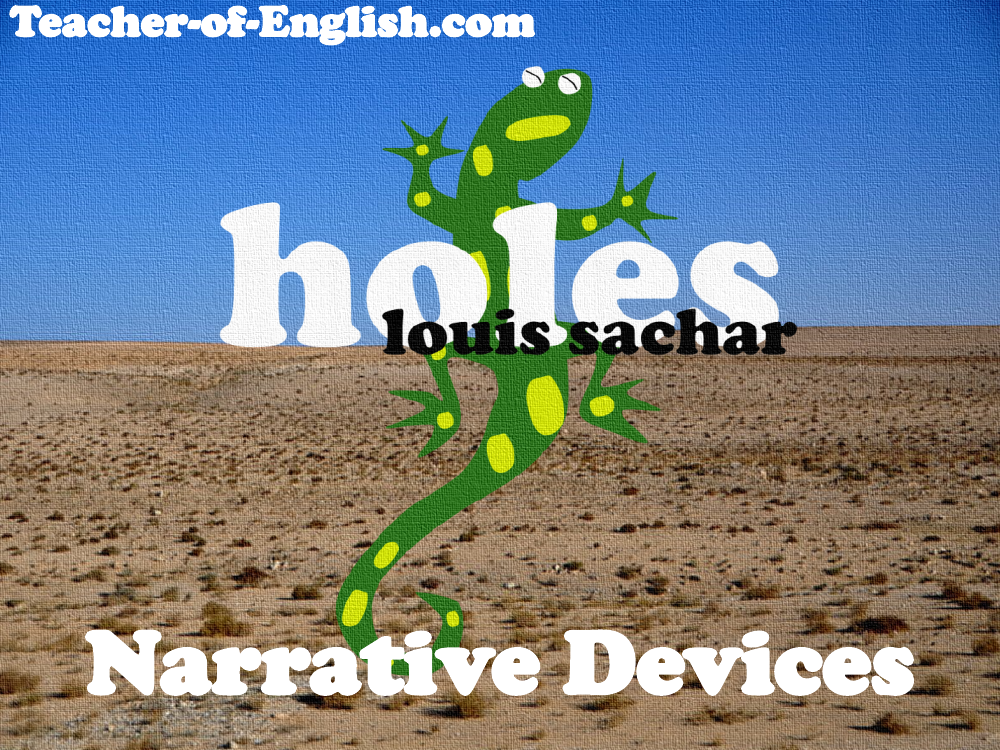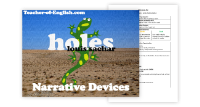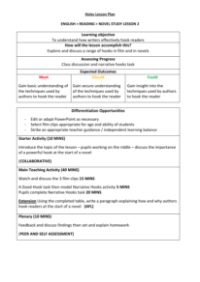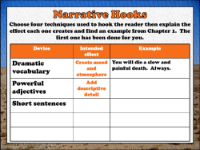Holes Lesson 2: Narrative Devices - PowerPoint

English Resource Description
The lesson titled 'Narrative Devices' delves into the techniques writers employ to captivate and engage their readers. The objective is clear: to understand the specific narrative tools that make a story compelling. The lesson begins with a riddle that draws a parallel between an author and an angler, both of whom use a 'hook' to catch their respective targets. This serves as an introduction to the concept of narrative hooks, a literary device that writers use to pique a reader's interest, particularly at the beginning of a novel. These hooks are crucial for drawing readers into the narrative from the outset.
Further exploring narrative hooks, the lesson points out their prevalence in movies as well, where they serve a similar purpose in grabbing the audience's attention. The lesson encourages students to consider various techniques that authors might use to 'hook' their audience, such as employing powerful adjectives and dramatic vocabulary. Students are tasked with choosing four such techniques, explaining their effects, and providing examples from the first chapter of the novel 'Holes' by Louis Sachar. One example is given, showing how dramatic vocabulary can create mood and atmosphere, with the phrase "You will die a slow and painful death. Always." The plenary involves reflecting on how Sachar effectively hooks readers at the start of 'Holes', and for homework, students are expected to delve deeper into this analysis.



